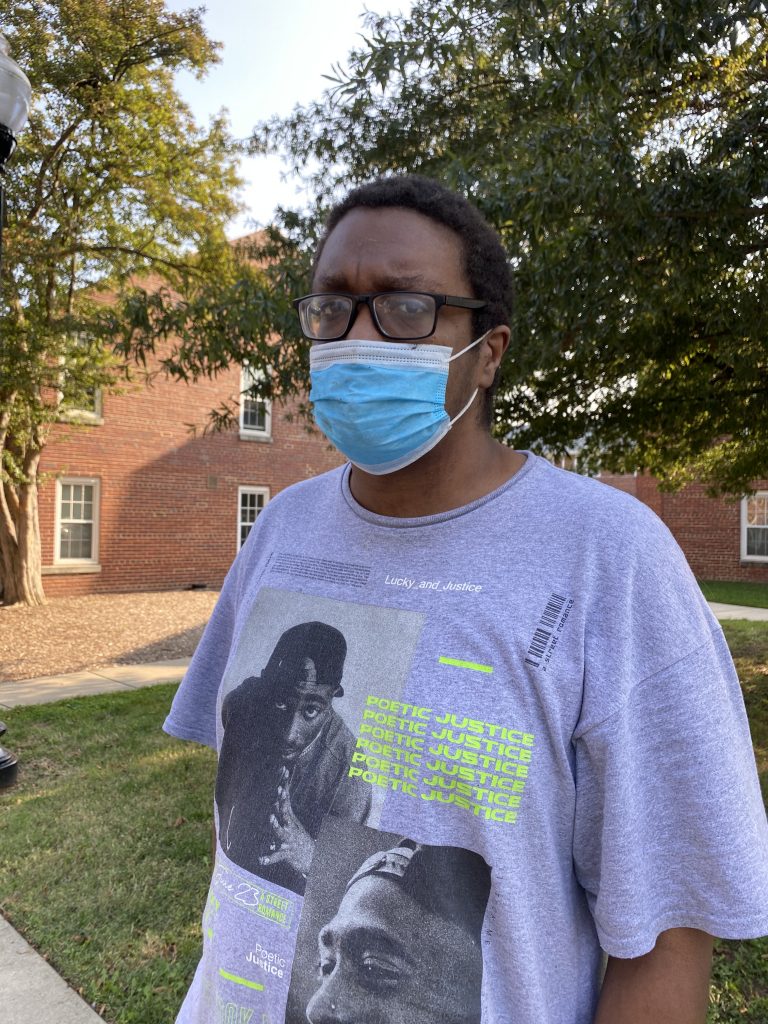The Arlington County Board will implement a “missing middle housing” study in late October in response to demands for more affordable housing from both the community and the Department of Community Planning, Housing, and Development.
Missing middle housing is higher density housing – such as duplexes, courtyard homes and small multiplexes – designed to be more affordable since it uses expensive land more efficiently by fitting more people within it. Despite the benefits to this type of housing, zoning and land use policies in the county restrict it, making 75% of land zoned residential areas in Arlington exclusively for single-family, detached homes.

“I only had two routes,” he said. “Section 8, and a housing grant.” (Sarah Salem / The Wash)
CPHD found a strong relationship in their research between Arlington’s exclusionary zoning policies and a lack of diversity and housing opportunities for Arlington’s households of color, specifically Black or African American and Hispanic or Latino households.
In the state of Virginia, according to the U.S. Census Bureau’s Household Pulse Survey conducted in June, 57% of those who said they lacked confidence in the ability to make next month’s rent were black, and 14% were Hispanic.
Households of color are being affected additionally by COVID-19 eviction moratoriums being lifted. Jhon Deleon, 22, said he remembers his neighbors being evicted recently.
“There was one couple, my neighbors,” he said, “but that’s because they were making a lot of noise and making barbeques out there.”

Richard Tucker, the Housing Coordinator of the Department of Community Planning, Housing & Development, said Arlington has been a county since the 1920s, a time where residential areas were assigned. Then, households of color were designated to zones with duplexes and multi-family households.
Tucker said that when combined with a history of discriminatory lending practices concerning federal loans, the value of these zones of land depreciated. As a result, this type of housing is less common now compared to single-family, white-populated, high-valued housing.
“Our goal is to increase the amount of the supply of housing,” he said, “and increase the diversity of housing as a way to help address the disparity and growing gap in jobs that are created in this area and the housing that’s available in this area.”
The impetus for this Missing Middle Housing Study was feedback from members of the community that participated in Arlington’s Big Idea Roundtables, a series of nine roundtable conversations that Arlington County hosted in the summer of 2018. The community brought up the lack of affordable housing in the area as one of the main themes.
“The middle class is blown away by property values,” community members said in their roundtable comments. “Does growth provide the opportunity for affordability? We need to keep families with low [or] moderate incomes here.”
Tucker said affordable housing is a problem in Arlington because Arlington is a very desirable place to live within the region due to its proximity to D.C.
“It’s a region-wide problem that housing costs have increased over time,” he said. “The region generates a lot of jobs, a lot of high-quality jobs. It’s always going to be in the center of the housing crunch for those reasons.”
An example of affordable housing in the area is Gates of Ballston, a multi-family multiplex, with a minimum income of $34,000. Kevon Caesar, 23, said though affordable housing was hard to find, the complex suits him very well.
“It’s pretty safe,” Caesar said. “They pretty much have everything I need here. The buses are over there, the grocery store, I pretty much have everything in walking distance.”
While Caesar and Deleon are two examples of residents satisfied with their affordable housing situations, Tucker said the problem is quantity, not quality. According to the Housing Arlington Community Conversation Series, the D.C. area is projected to gain 300,000 additional jobs by 2040. Therefore, Tucker said the county must solve for supply.
“Housing in Arlington will continue to be more and more expensive and less obtainable overtime,” Tucker said. “Do we want to interject ourselves with this study to determine if there are other housing forms in single-family areas that can be produced at a lower cost?”
On Sept. 23, CPHD presented their research to the County Board, which plans to implement a “refined scope” of missing middle housing in the county in late October. The study will involve a three-phase process of first understanding the community’s challenges and priorities, studying where a housing shortage falls, and considering new recommendations for amending policies such as the Zoning Ordinance.















Add comment